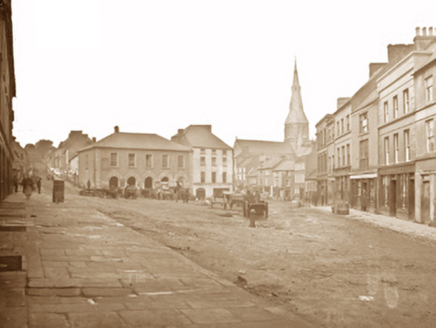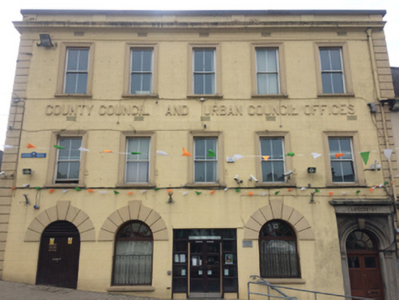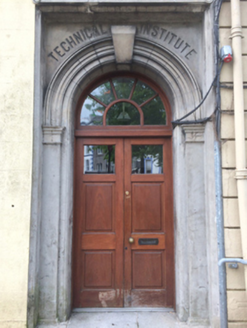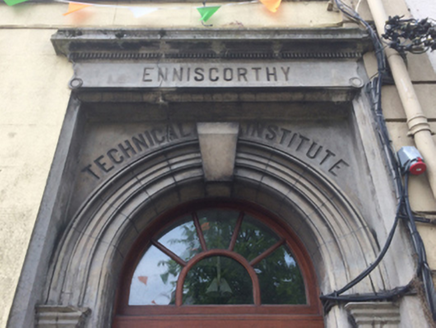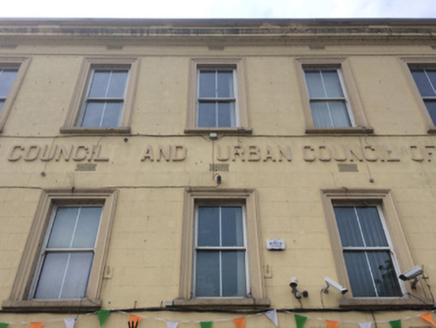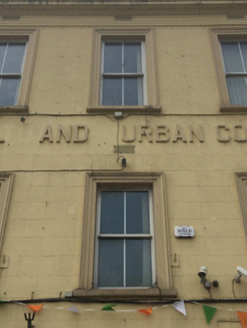Survey Data
Reg No
15603027
Rating
Regional
Categories of Special Interest
Architectural, Historical, Social
Original Use
Market house
Historical Use
School
In Use As
Office
Date
1700 - 1798
Coordinates
297205, 139857
Date Recorded
13/06/2005
Date Updated
--/--/--
Description
Attached five-bay (three-bay deep) three-storey market house, extant 1798, on a rectangular plan originally five-bay two-storey. Vacant, 1901. Reconstructed, 1910-1, producing present composition to accommodate alternative use. Adapted to alternative use, 1973. Refenestrated, ----. Replacement flat bitumen felt roof behind parapet with concealed rainwater goods retaining cast-iron octagonal or ogee hoppers and downpipes. Rendered, ruled and lined walls with rusticated rendered piers to corners supporting ogee-detailed cornice on blind frieze on entablature below parapet. Series of remodelled round- or segmental-headed openings (ground floor) with rusticated rendered voussoirs centred on keystones. Round-headed door opening in square-headed recess (north) with granite flagged threshold, rendered doorcase with pilasters on padstones supporting moulded archivolt centred on keystone framing glazed timber panelled double doors having fanlight. Square-headed window openings (upper floors) with concreted cut-granite sills, and moulded rendered surrounds framing replacement uPVC sash windows replacing two-over-two timber sash windows. Square fronted.
Appraisal
A market house representing an important component of the built heritage of Enniscorthy with the architectural value of the composition, one 'built and kept in repair by the Portsmouth family...contain[ing] a large room occasionally used for concerts and public meetings' (Lewis 1837 I, 603), confirmed by such attributes as the compact rectilinear plan form; the remnants of a characteristic arcade at street level; and the slight diminishing in scale of the openings on each floor producing a feint graduated tiered visual effect: meanwhile, aspects of the composition clearly illustrate the near-total reconstruction of the market house to designs by Thomas Aloysius Burke Lowey (d. 1928) of Dame Street, Dublin (Builder 10th April 1910, 451). NOTE: The late eighteenth-century origins of the market house, and its accidental history as a scene of unrest during the 1798 Rebellion, are confirmed by contemporary accounts by Gordon James who notes that 'a considerable guard was posted at the market-house where arms and ammunition were lodged' (The History of the Irish Rebellion 1813, 196); and Richard Musgrave who notes that 'Thomas Ridgley [was] murdered and burned in the market-house of Enniscorthy' (Memoirs of the Different Rebellions in Ireland Volume II 1802, 370).
